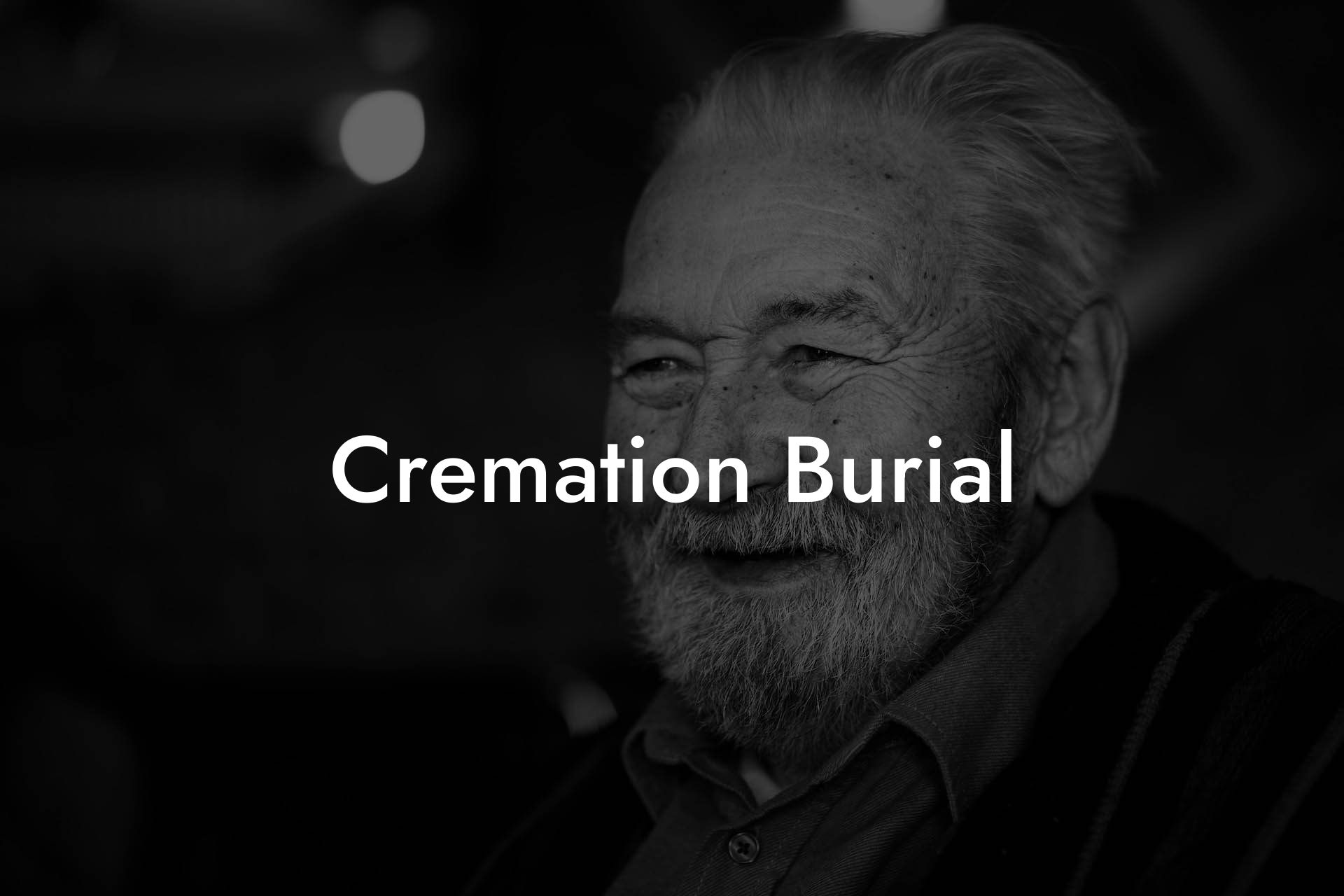Imagine a world where death is celebrated with the same reverence as life. Welcome to the world of cremation burial, a modern approach to honoring our loved ones that's kinder to the environment, more affordable, and deeply personal. Whether you're planning ahead or navigating the loss of a loved one, this comprehensive guide will walk you through the ins and outs of cremation, from the history and benefits to the various options and cultural traditions.
Quick Links to Useful Sections
A Brief History of Cremation
Cremation has been around for thousands of years, with evidence of its practice dating back to ancient civilizations in Greece, Rome, and India. While it was once seen as a radical departure from traditional burial practices, cremation has become increasingly popular in recent years, with over 50% of Americans choosing cremation over traditional burial.
So, what's behind the shift? For one, cremation is a more environmentally friendly option, reducing the carbon footprint associated with traditional burials. It's also more affordable, with costs averaging around 30% less than traditional funerals. But beyond the practical benefits, cremation offers a unique opportunity to personalize the memorialization process, allowing families to create meaningful, one-of-a-kind tributes to their loved ones.
The Benefits of Cremation
So, what are the benefits of cremation? Here are just a few:
- Environmental Sustainability: Cremation reduces the environmental impact of traditional burials, conserving land, water, and other natural resources.
- Affordability: Cremation is a cost-effective option, with prices averaging around 30% less than traditional funerals.
- Personalization: Cremation offers endless opportunities for personalization, from customized urns to unique memorialization options.
- Flexibility: Cremation allows families to hold memorial services at a time and location that works best for them, rather than being tied to a specific funeral home or cemetery.
These benefits, combined with the growing desire for more personalized, eco-friendly funeral options, have contributed to cremation's rising popularity.
Cremation Options: What to Expect
So, what happens during the cremation process? Here's an overview:
The cremation process typically begins with preparation, where the body is cleaned, dressed, and prepared for cremation. The body is then placed in a cremation chamber, where it's exposed to high temperatures (around 1400°C) for 1-2 hours. The resulting ashes are then processed into a fine powder, known as cremated remains or ashes.
From there, families can choose from a variety of options, including:
- Direct Cremation: A simple, no-frills option that includes cremation and return of the ashes, often at a lower cost.
- Traditional Cremation: A more traditional option that includes a funeral service, viewing, and cremation, often with a memorial service to follow.
- Cremation with Memorialization: A personalized option that includes cremation, a memorial service, and a permanent memorial, such as a headstone or plaque.
Each option offers a unique set of benefits and considerations, allowing families to choose the approach that best honors their loved one.
Cultural and Religious Traditions Surrounding Cremation
Cremation is practiced across cultures and religions, each with its own unique traditions and customs. Here are a few examples:
In Hinduism, cremation is seen as a way to release the soul from the body, allowing it to ascend to the afterlife. In Buddhism, cremation is often accompanied by rituals and prayers, aimed at helping the deceased achieve a positive rebirth. In some African cultures, cremation is seen as a way to return the body to the earth, symbolizing the cycle of life and death.
These cultural and religious traditions highlight the diversity of cremation practices around the world, each with its own unique significance and meaning.
Cremation Memorialization: Honoring Your Loved One
Cremation memorialization offers a wide range of options for honoring your loved one, from traditional burial to more unconventional approaches. Here are a few ideas:
- Scattering Gardens: A designated area where families can scatter the ashes, often with a memorial plaque or monument.
- Urn Gardens: A peaceful, serene space where urns are placed, often with a memorial stone or plaque.
- Tree Planting: A living memorial, where a tree is planted in memory of the deceased, often with a plaque or stone.
- Sea Burial: A unique option that involves scattering the ashes at sea, often with a memorial service to follow.
These options, combined with the growing trend of personalized funerals, offer families a chance to create a truly one-of-a-kind tribute to their loved one.
Frequently Asked Questions About Cremation
Here are some frequently asked questions about cremation:
1. Is cremation a safe process?
Yes, cremation is a safe and regulated process, with strict guidelines in place to ensure the dignity and respect of the deceased.
2. Can I still have a funeral or memorial service with cremation?
Absolutely! Cremation can be accompanied by a funeral or memorial service, allowing families to honor their loved one in a meaningful way.
3. What happens to the ashes after cremation?
The ashes are returned to the family, who can then choose from a variety of memorialization options, such as burial, scattering, or keeping the ashes in an urn.
4. Is cremation more environmentally friendly than traditional burial?
Yes, cremation is a more environmentally friendly option, reducing the carbon footprint associated with traditional burials.
5. Can I pre-plan my cremation?
Yes, pre-planning your cremation is a great way to ensure your wishes are respected, while also alleviating the burden on your loved ones.
Resources and Community Support: Your Next Steps
If you're considering cremation for yourself or a loved one, here are some resources to get you started:
- National Funeral Directors Association (NFDA)
- International Cemetery, Cremation and Funeral Association (ICCFA)
- Cremation Association of North America (CANA)
These organizations offer a wealth of information on cremation, from planning and preparation to memorialization and grief support.

